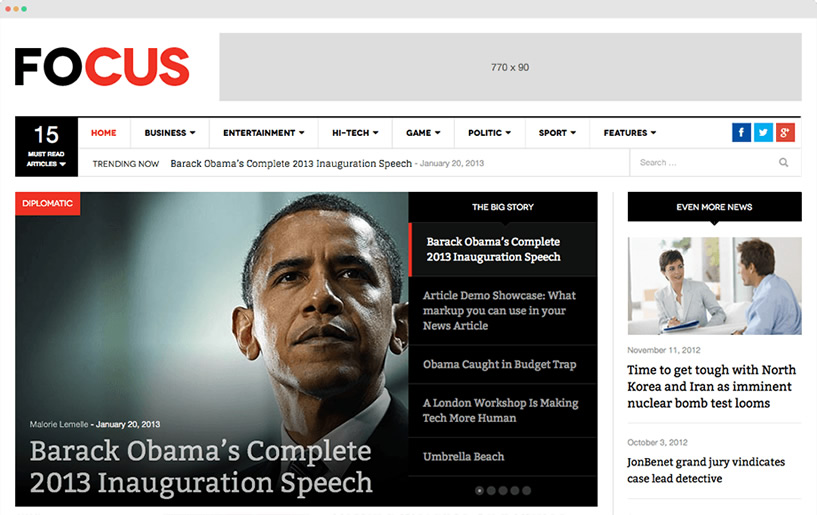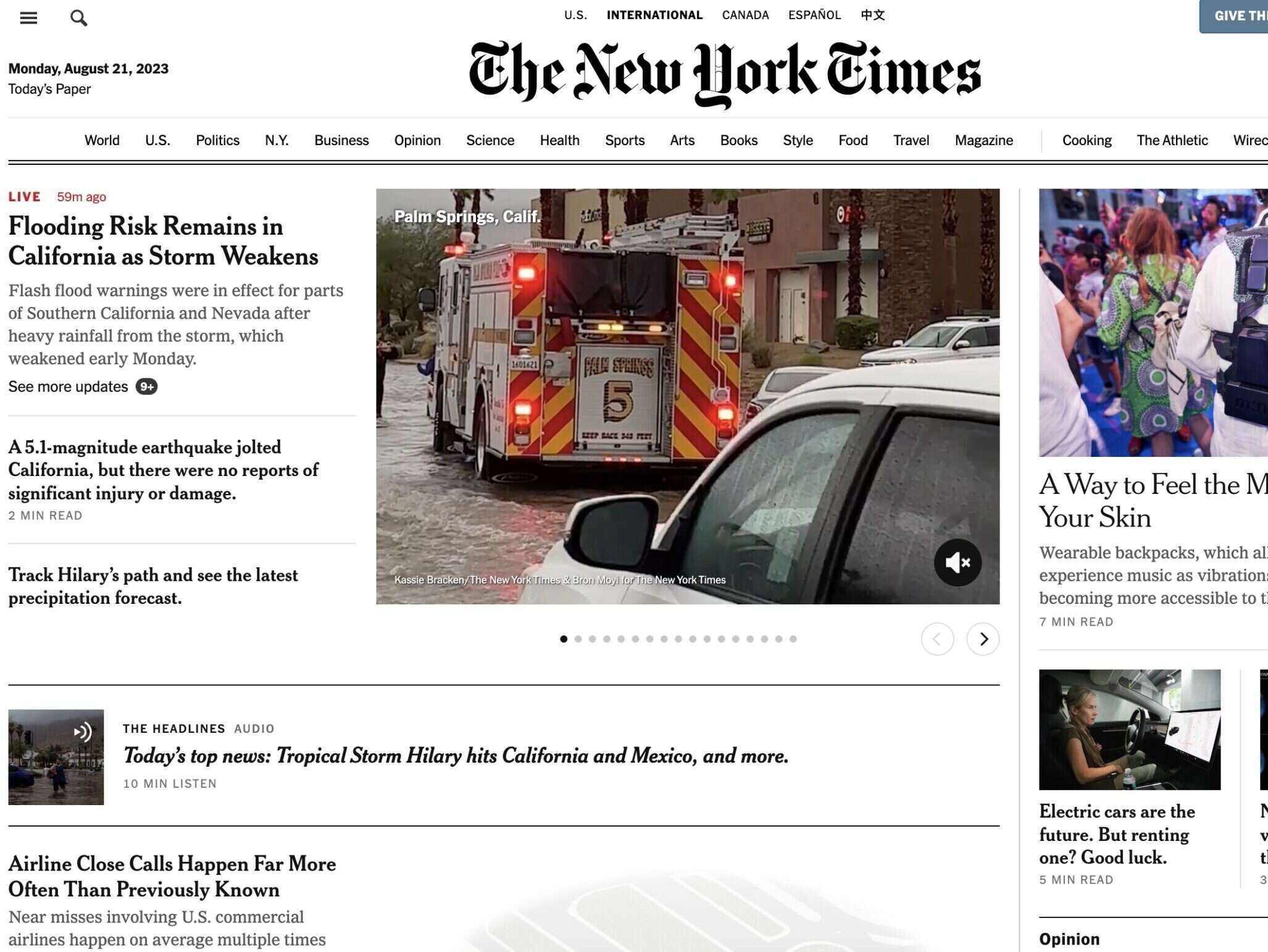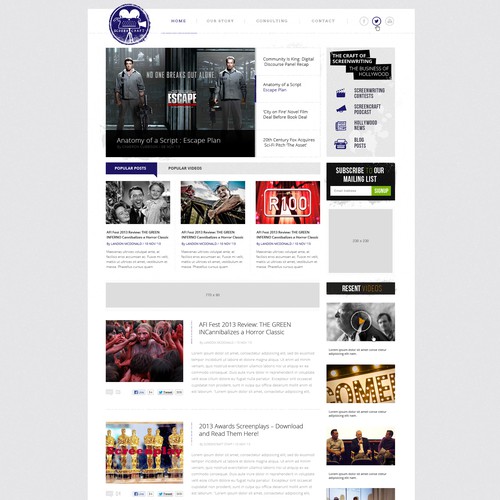News Websites Can Be Fun For Everyone
Not known Facts About News Websites
Table of ContentsFascination About News WebsitesHow News Websites can Save You Time, Stress, and Money.The Facts About News Websites RevealedGetting The News Websites To WorkThe 8-Minute Rule for News WebsitesAn Unbiased View of News Websites
If you upload a great deal of content, you can manage to make some of it paid. You want to make sure that if the user determines to pay for reading it, they will certainly be content with it.And they will certainly not badmouth you, damaging your PR.Many papers use this remedy. Bear in mind that when it comes to papers, people are utilized to paying for them. To make this option profitable, you have to gain a certain renown and a devoted audience. See to it to maintain the majority of the content free! An ad-free portal in exchange for a monthly membership for a signed up user.
Keep in mind that customers have this possibility absolutely free. In order to combat this, you have to that will attract customers and encourage them to consider paying. You can technically safeguard your internet site against ad blocking software application. Bear in mind, users will only pay if they like your web content. You can: no advertisements and exceptional content behind Paywall.
Newsrooms must additionally take into consideration using quizzes for hard news stories and utilizing tests as a chance to share accurate, respectable data. Lots of information sites include online surveys that normally ask visitors regarding their viewpoints, such as whether they favor or oppose a brand-new policy or who they wish to win an approaching election.
How News Websites can Save You Time, Stress, and Money.
Slider tests are in many means similar to multiple-choice quizzes, they offer some distinct benefits. They aid people to recall even more info, whether they're inquired about the details utilizing open-ended, fill-in-the-blank test inquiries or whether they're inquired about the information utilizing closed-ended, multiple-choice test concerns. For multiple-choice tests, individuals are much better able to respond to the closed-ended questions than they are the flexible questions.
We contrasted these two sorts of quizzes to non-interactive discussions of quiz info. We built up the amount of time each individual spent with 3 slider tests, three multiple-choice tests, or three summaries of the test information. Individuals spent more time with the Slider Quizzes and Multiple-Choice Quizzes than they did with the Quiz Info.
An arbitrary fifty percent of individuals were asked these questions in a closed-ended layout resembling the multiple-choice tests (News Websites). The other arbitrary fifty percent of individuals were asked these concerns in an open-ended, fill-in-the-blank layout resembling the slider quizzes. Those in the Slider Quizzes and Multiple-Choice Quizzes problems recognized greater than those in the Quiz Information and Control conditions
The smart Trick of News Websites That Nobody is Discussing

Participants were asked to rate just how dull or enjoyable they discovered the quiz from 1 (boring) to 5 (pleasurable). Individuals found the Multiple-Choice Quizzes and Slider Quizzes extra satisfying than the Quiz Info.

A Biased View of News Websites
Of those that did join the test, they finished approximately 4.41 of the 7 test concerns. The even more test concerns that participants finished, the more time they spent on the website. If a newsroom wants to embed greater than one test on a page, involvement is greater if both tests utilize different styles (one go to this web-site multiple-choice and one slider) than if both quiz questions use the same format.
When there were two various kinds of inquiries, website visitors got involved in approximately 0.21 tests, whereas those that saw two of the exact same sorts of questions took part in a standard of 0.11 tests. News Websites. Time on page was also higher when two different tests were made use of contrasted to two tests with the very same style
Participants for this study were recruited through Survey Tasting International (SSI), an online study panel supplier, to mirror the latest example of Web individuals in the United States as identified by the Pew Proving ground's Web & American Life Project August 2012 monitoring survey. Information for this research were gathered in very early October, 2012.

3 Simple Techniques For News Websites
This problem had individuals react to three closed-ended quizzes. Each test concern had four response alternatives. Participants who responded to appropriately received a notice of their "Great job!" while wrong answers were corrected with the precise info. This problem contained a format similar to those currently featured on a lot of neighborhood news sites.
There were no alternatives in this problem for individuals to interact. In this condition, participants did not see any type of quizzes and did not get any type of brand-new details. This team was made use of as a factor of contrast in establishing which test layout was most reliable in aiding individuals discover, boosting time on website, and engaging individuals.
There were no differences among the problems relative to these market features. To obtain a far better understanding of the history features of our example, we additionally gauged: Participants' political expertise using nine test inquiries (e.g. which celebration has the most members in the Us senate, what political setting is now held by John Boehner, etc) that can not be acquired from any of the experimental stimulations.
The 45-Second Trick For News Websites
Typically, participants answered 5 of the nine inquiries properly. How usually respondents adhered to politics from rarely in any way (1) to every one of the time (4 ). Typically, participants adhered to politics several of the time (standard = 2.83). Participants' political belief from really conservative (1) to extremely liberal (5) and partisanship from solid Democrat (1) to strong Republican (5 ).